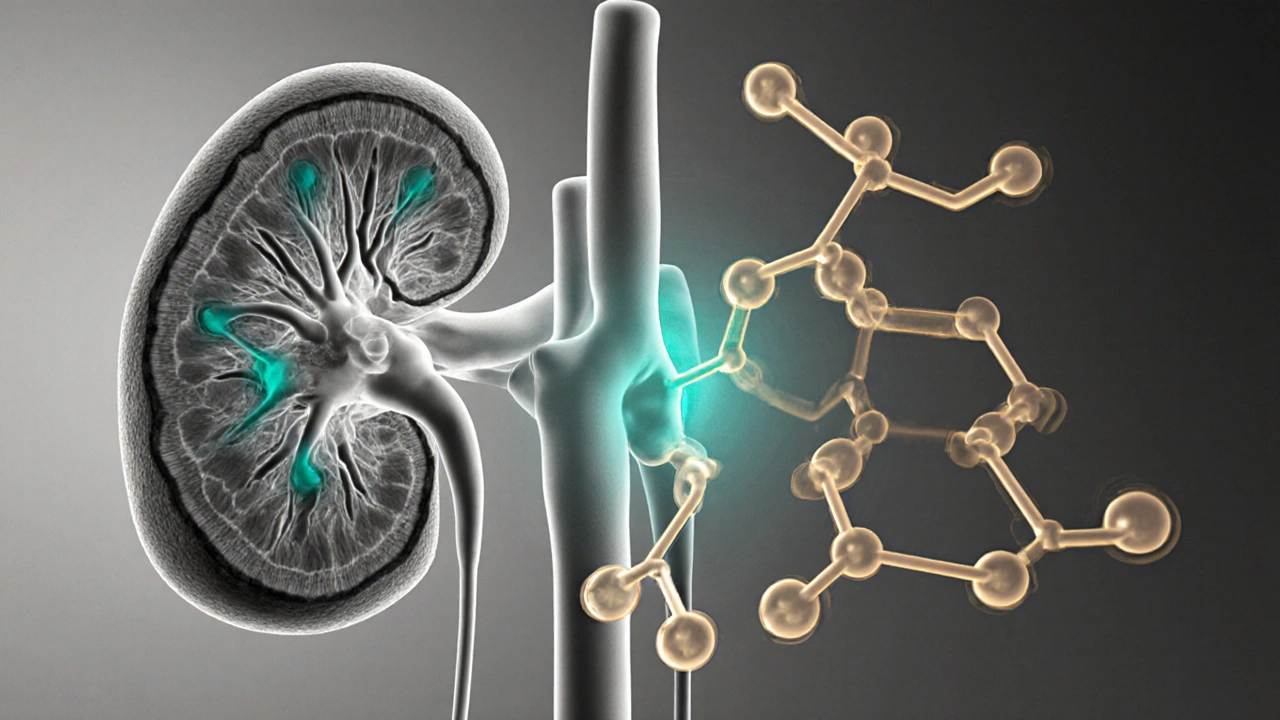Empagliflozin – Essential Guide for Diabetes, Heart & Kidney Health
When working with Empagliflozin, a sodium‑glucose co‑transporter‑2 (SGLT2) inhibitor used to lower blood sugar in adults with type 2 diabetes and to cut cardiovascular risk. Also known as Jardiance, it has become a cornerstone in modern chronic‑disease management.
Empagliflozin belongs to the broader class of SGLT2 inhibitors, drugs that block glucose reabsorption in the kidney, causing excess sugar to be expelled in urine. This mechanism not only improves glycemic control but also creates a modest diuretic effect that helps lower blood pressure and reduce heart‑overload. Because of these properties, clinicians often prescribe it beyond pure diabetes care.
Key Conditions Treated with Empagliflozin
The first condition you’ll see linked to Empagliflozin is Type 2 Diabetes, a chronic disease where the body either resists insulin or doesn’t produce enough. In most guidelines, Empagliflozin is added after metformin failure or used as first‑line therapy when patients have cardiovascular risk factors. Typical dosing starts at 10 mg once daily, with a possible increase to 25 mg if glucose targets aren’t met and kidney function allows.
Beyond diabetes, Empagliflozin shows clear benefits for Heart Failure, a syndrome where the heart cannot pump enough blood to meet the body’s needs. Large outcome trials demonstrated a 20‑25 % reduction in cardiovascular death and hospitalizations for heart‑failure patients, even those without diabetes. As a result, many heart‑failure clinics now list Empagliflozin as a standard therapy for patients with reduced ejection fraction.
Kidney health is another arena where Empagliflozin shines. It slows the progression of Chronic Kidney Disease, a gradual loss of kidney function over months or years by lowering intraglomerular pressure and reducing albuminuria. Studies report a 30‑35 % drop in the risk of kidney‑related events compared with placebo, making it a valuable tool for nephrologists treating diabetic and non‑diabetic kidney disease.
Safety is a top concern for any medication. The most common side effects of Empagliflozin are genital mycotic infections, urinary tract infections, and mild dehydration. Patients with a history of recurrent UTIs should be monitored closely. Rare but serious events include ketoacidosis (especially in low‑carb diets) and Fournier’s gangrene. The drug is not recommended during pregnancy or breastfeeding because of limited data, so clinicians usually switch to insulin‑based regimens for pregnant women.
Understanding how Empagliflozin fits into a broader treatment plan helps you make smarter choices. Whether you’re tackling blood‑sugar spikes, protecting your heart, or slowing kidney decline, the drug offers a multi‑layered approach that aligns with current guidelines. Below you’ll find a curated selection of articles that dive deeper into dosing tips, side‑effect management, drug‑interaction checks, and real‑world patient experiences—all aimed at giving you the confidence to use Empagliflozin safely and effectively.
Empagliflozin and Stress Management: Boosting Resilience to Stress
- Laura Ledas
- Oct, 1 2025
Explore how empagliflozin, a diabetes drug, may lower cortisol, boost HRV, and improve resilience when paired with lifestyle habits.
Learn More